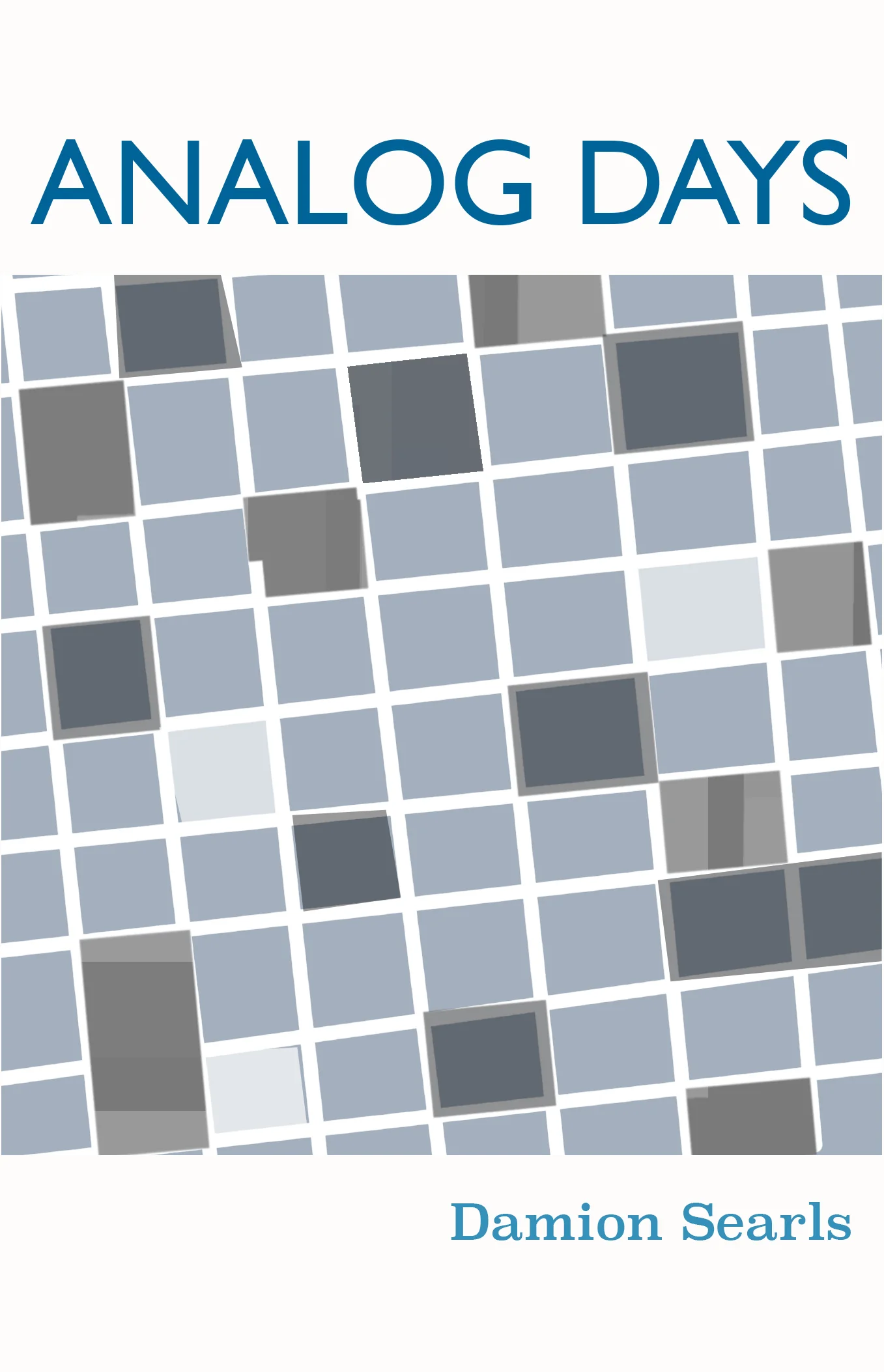 Damion Searls’s Analog Days, the newest novella in Coffee House Press’s NVLA series, is a 100-page book that explores, among many things, what it means to tell a story against a backdrop of ever-present political and environmental devastation. Set in 2016, the novella tracks events such as the murder of Jo Cox through to the emergence of the extreme right in the UK and the US, including Trump’s rise through the Republican Party to become the presidential nominee, and Boris Johnson stumbling toward his doomed prime ministership. But rather than interrogating or lingering on these news items, the narrator describes them in a mostly matter-of-fact way, setting the scene as other writers might mention the weather to establish mood.
Damion Searls’s Analog Days, the newest novella in Coffee House Press’s NVLA series, is a 100-page book that explores, among many things, what it means to tell a story against a backdrop of ever-present political and environmental devastation. Set in 2016, the novella tracks events such as the murder of Jo Cox through to the emergence of the extreme right in the UK and the US, including Trump’s rise through the Republican Party to become the presidential nominee, and Boris Johnson stumbling toward his doomed prime ministership. But rather than interrogating or lingering on these news items, the narrator describes them in a mostly matter-of-fact way, setting the scene as other writers might mention the weather to establish mood.
This is not to say that the events aren’t described with evocative language, or that we don’t get a sense of the narrator’s opinions, but they are allowed to recede into the background. While the narrator and a group of friends talk about people they used to know, discuss issues of modernity, or chat about bad dates, these news items orientate us in time as well as any month or date.
Narrated through a series of diary entries, the plot (for lack of a better term) follows a coder living in New York, who early in the story tears a tendon in his foot. As though this injury has cemented him in the present moment, he decides he will think about everything twice, “the day of and the day after.”
The coder likewise recalls a writer, Mark, who tried to publish a paper blog: “He called it a plog. The same way blogs are not just uploaded diaries or short essays—maybe they were at first, but then they became a new kind of writing—so, too, the plog is not just a printout of blog entries but a form of its own.” When publishers reject it, Mark strives to live what he calls “an analog life,” avoiding the internet as much as possible. The narrator and their friends dutifully point out that this is impossible, since even if Mark buys airline tickets directly at the booth, the person making the booking still uses a digital system, but he continues, regardless. We are never told outright that the narrator is chronicling their own analog life, but the comparison remains, the novella becoming a blend of granular moments with the above-mentioned conversations between friends, news items, and childhood memories, all overlapping and bouncing off one another.
The novella works best when it rides the crest of these associations. A magician shifting cards on the subway, musings on where stained sheets go when they die, and the story of a friend’s child drowning in six inches of water. Searls’s writing is effective not only because of how insightful and playful it often is (“The web is, obviously to everyone, a huge waste of time,”), but also in the way he maintains our attention as he shifts from one subject to another. As the narrator and his otherwise faceless friends introduce new topics, a growing sense emerges that there might be a web of meaning connecting these fragments.
Partway through the book, the narrator compares Donald Trump to a used car salesman, referencing the tactic of such pushy salespeople to bombard customers with trivial questions so that by the time they’re asked whether they want to buy, they’re neck-deep in decision fatigue. The narrator describes this as “the decision-making limit—once our brains reach that limit they become craggy, overloaded.”
They then compare this with the internet: “The web is a trillion decisions mainlined right into your gently beating heart: automatic decision fatigue.” As the novella continues and the narrator’s foot injury worsens, we get a sense of their exhaustion. This is around the same time they become infatuated with Jim Jarmusch’s 1995 film Dead Man, using it as a lens to reflect on America’s past and present, as well as on Neil Young’s music and the nature of art more generally. This digression follows as the narrator watches a fictional film by a fictional artist called The Salt Smuggler, which, in order to evade censorship in its unnamed country, exists only as a film of notes, references, and stray images.
Books within books and stories within stories are par for the course in avant-garde texts that explore the limits of storytelling, but for me, this was when the novella felt least innovative. That isn’t to say I lost interest, but of all the pathways the book takes, the Dead Man section is the most winding, a frustration only added to by the narrator’s reluctance to discuss the fact that Dead Man’s star Johnny Depp’s divorce from Amber Heard took place in 2016, too. Its purpose, however, remains clear—to the point where I was left wondering if the monotony of this digression and failure to mention the allegations against Depp were intentional. By the time the events of 2016 reach their crescendo, with Trump crowned commander-in-chief, the narrator has lost themselves in layers of art upon art, of interpretation on top of interpretation. They have given into the comfort of criticism in the face of a buffet of bad news.
And who can blame them? Even as I write this review, my phone buzzes with updates about the ongoing genocide in Gaza, the death of the Houthi prime minister, and the shooting of Charlie Kirk. These are all events I have strong opinions about, but which reach me like weather updates, or phone companies asking me if I’m happy with my current data allowance. Instead of parsing them, a large part of me would much rather read books or watch films, and chat about them with my friends.
The question becomes: Is a book that reflects this indecision back at you a wake-up call, or just another form of procrastination?
That’s for you to decide.
Publisher: Coffee House Press
Publication Date: October 21, 2025
Reviewed by Mark Daniel Taylor
Mark Daniel Taylor is a writer from London. He is a former member of the Collier Street Fiction Group and is an alumnus of the New Orleans Writers’ Residency. You can find his other published works at www.markdanieltaylor.co.uk.
